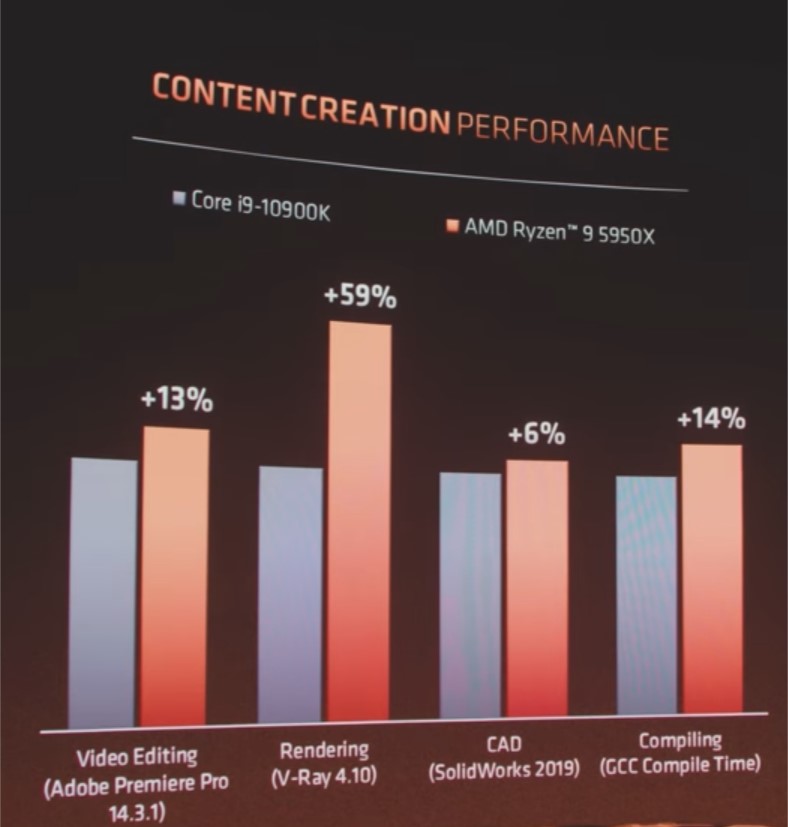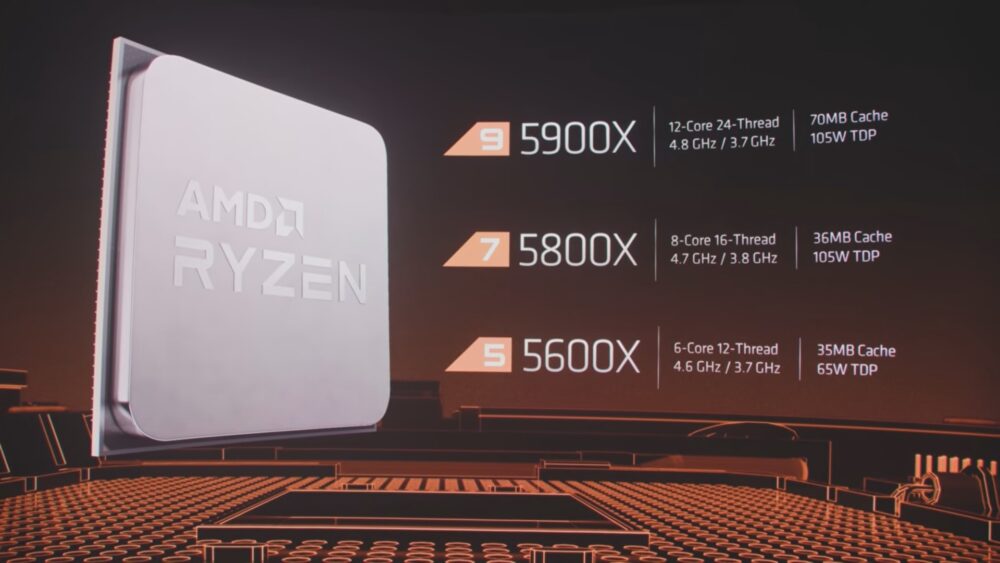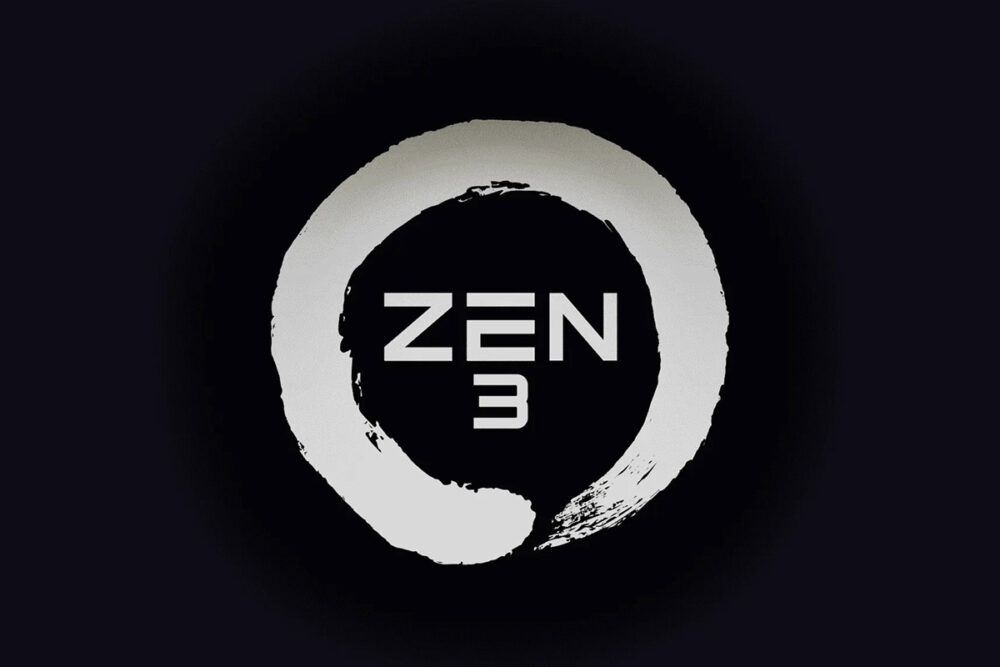Dr. Lisa Su, the CEO of AMD, went to the stage yesterday, to announce the launch of the next mainstream processors, Ryzen 5000. The key element of the product design was latency and 19% IPC(Instructions-Per-Cycle) improvement, which is much better than the Zen 2 processors. The four new processors are compatible with the 500-series AMD motherboard and will available for purchase from 5th November.
Welcome the Four New Processors
The Ryzen family still consists of the same processor lineup for a launch every year, i.e., Ryzen 9, Ryzen 7, and Ryzen 5.
Ryzen 9 5950X:
The flagship product for Ryzen 5000 series is a 16c/32t processor, Sorry for those who were speculating that it was going to be a 24/32 Core processor. The processor is made up of two 8 core chiplets and has 64MB L3 cache. It also has a TDP 105W. AMD is touting this processor as the processor ‘Gaming + Content Creation’, they have made improvements in the Cache Latency in the 16-32MB region. The 19% IPC gains also help the Ryzen 9 5950X not only crush its Intel Counterpart, Intel i9-10900K, not only in the light threaded task like CAD workloads but also a gaming.


The Ryzen 5950X will be available for $799 from 5th November.
Ryzen 5900X:
This processor is interesting and will be the most sought for, in my opinion. AMD is calling this processor as the ‘ World’s Gaming Processor’. The slides that AMD showed were also very impressive, we are seeing over 26% average increase in performance in games over Intel i9-10900K. The funny part is that they have also included the ‘-3%’ in the Battlefield V benchmark, quite humble of AMD to do that.

AMD has achieved this increase in gaming performance with a 19% IPC gain and higher frequencies. Most games don’t scale well enough to high cores; however, we are seeing developers changing that with future games like Dirt 2. So, when all the cores won’t be in use, the lower core usage helps in increasing the boost frequencies and help increase gaming performance, which is further accelerated by an increase in IPC. We are also seeing some latency improvements, as
The cache latency graph for an individual core now has substantially lower latency in the 16-32MB region based on combined LLC. If you have a 22 MB cache hit, you won’t have to go out to DRAM assuming it’s prefetched properly.
Ryzen 7 5800X:

The Ryzen 7 5800X is the successor to the much popular Ryzen 7 3700X. This is a single chiplet processor consisting of 8c/16t. This is also where we will see a good amount of gaming performance increase due to reduced latency and IPC gains. So, here AMD is using a unified 8 CCX (Core Complex), they have combined two 4 core structures to make a single 8 core structure. Giving all the 8-cores direct access to the 32MB L3 Cache, nor only we will be able to see the Cache Improvements but Core-to-Core communication is also improved. Overall this will result in much better gaming performance and I can easily say that this will be at the Intel i7-10700K.
The Ryzen 7 5800X will retail for $449 and will be launching on 5th November.
Ryzen 5 5600X:
The base model is the Ryzen 5 5600X, no non-X model this time around. It will surely be available down the line maybe after 3-4 months. This also incorporates a single chiplet design with 6c/12t. This is the only processor that will ship with a cooler and has 65W TDP. This processor will see a nice boost clock of 4.6 GHz.
The Ryzen 5 5600X costs more than the Ryzen 5 3600 with the pricing at $299. However, it lines with the price of i5-10600K which retails for the same price.
Conclusion:

They have achieved what they had set out to do with the Zen 3 launch. They didn’t want Intel to give any excuses this time around and the only-front that they were behind, Gaming has been sealed off and closed with the Zen 3. Not to say that this is done. We will have to see how Zen 3 improves EPYC CPUs as Intel still has a lead in servers. With the improvements in Latency, we can see that going away too. This launch has been pretty amazing, AMD now takes the performance crown in all front. We are back in the Athlon Classic days.










